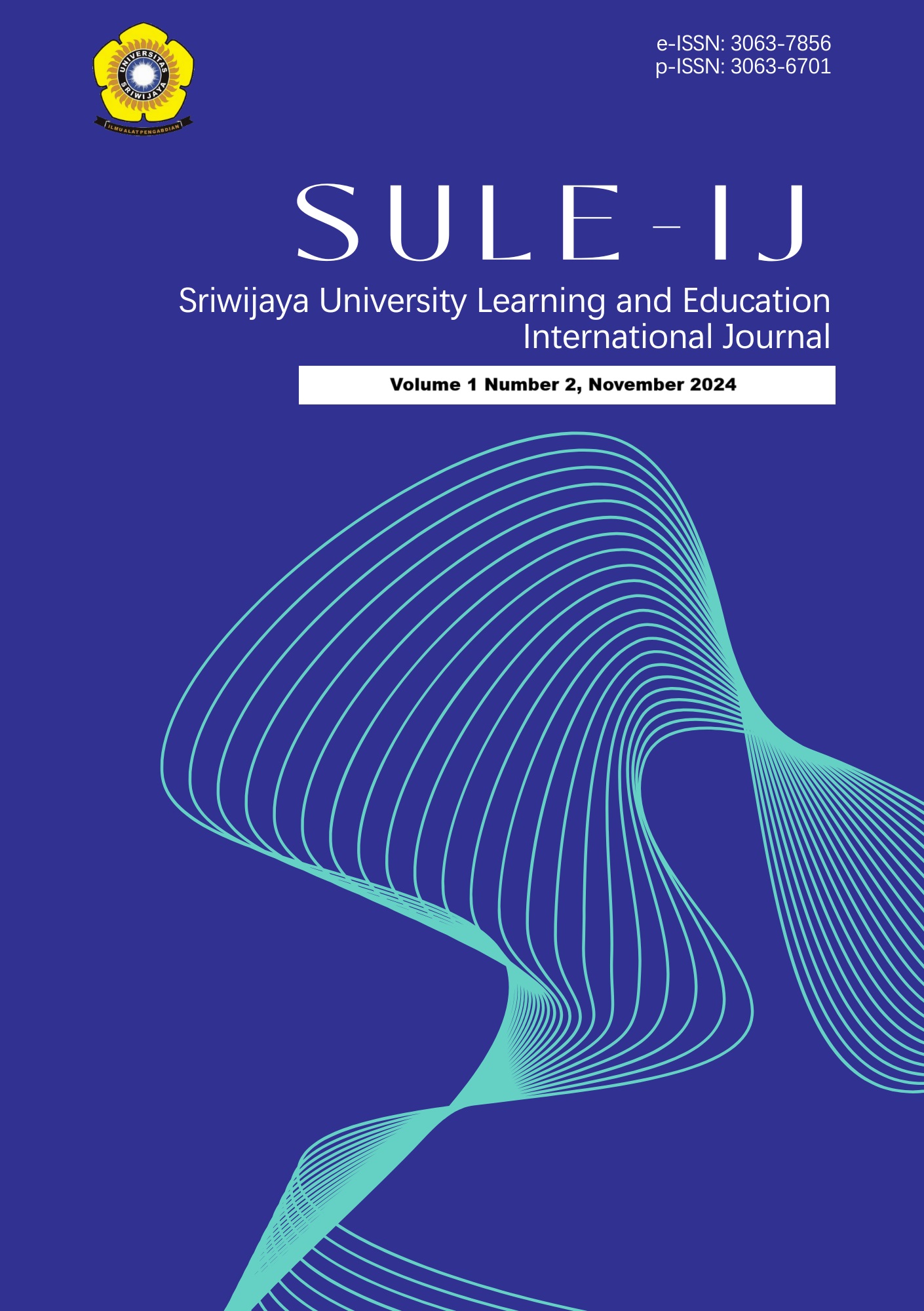Identification of student misconceptions using a four-tier diagnostic test of light matter in Junior High School
DOI:
https://doi.org/10.55379/sule-ij.v1i2.6Keywords:
Misconceptions, Four-Tier Diagnostic Test, Light MatterAbstract
This study aims to discover the level of misconceptions about light matter in grade IX students in junior high school. This study uses a quantitative approach and a descriptive method. Data were collected using the Four-Tier Diagnostic Test instrument. The questions used are in the form of multiple-choice questions as many as 15 questions. The subjects of the study were 58 students who had studied light matter. The variable in this study is how the misconception experienced by junior high school students on the light matter is an independent variable, while it will produce the research results which will later become the dependent variable. The results of the study show that many students still experience misconceptions in light materials with an average percentage of misconceptions of 68.39%, not understanding the concept of 15.40%, and understanding the concept of 16.21%. The average percentage of students who experience misconceptions is in the high category. The highest percentage of misconceptions regarding the direction of light propagation with a percentage of 31.03% of students experienced misconceptions in the category of moderate misconceptions.
References
Ananda, L., & Syuhendri, S. (2023). Misconceptions of prospective physics teacher students on the period of lunar phases. 090013. https://doi.org/10.1063/5.0122687
Araujo, I. S., Veit, E. A., & Moreira, M. A. (2008). Physics students’ performance using computational modelling activities to improve kinematics graphs interpretation. Computers & Education, 50(4), 1128–1140. https://doi.org/10.1016/j.compedu.2006.11.004
Caballes, D. G., Micah, F., & Abenes, D. (2020). Misconceptions in Chemistry of High School Teachers and its Origin. CiiT International Journal of Data Mining and Knowledge Engineering, 12(3), 48–54. https://www.researchgate.net/publication/345975932
Capriconia, J., & Mufit, F. (2022). Analysis of Concept Understanding and Students’ Attitudes towards Learning Physics in Material of Straight Motion. Jurnal Penelitian Pendidikan IPA, 8(3), 1453–1461. https://doi.org/10.29303/jppipa.v8i3.1381
Fariyani, Q., Rusilowati, A., & Sugianto. (2015). Pengembangan Four-tier Diagnostic Test untuk Mengungkap Miskonsepsi Fisika Siswa SMA Kelas X. Journal of Innovative Science Education, 4. https://journal.unnes.ac.id/sju/jise/article/view/9903
Febrianti, J., Akhsan, H., & Muslim, M. (2019). Analisis Miskonsepsi Suhu Dan Kalor Pada Siswa Sma Negeri 3 Tanjung Raja. Jurnal Inovasi Dan Pembelajaran Fisika, 6(1), 90–102. https://doi.org/10.36706/jipf.v6i1.7819
Gunawan, G., Nisrina, N., Y Suranti, N. M., Herayanti, L., & Rahmatiah, R. (2018). Virtual Laboratory to Improve Students’ Conceptual Understanding in Physics Learning. Journal of Physics: Conference Series, 1108, 012049. https://doi.org/10.1088/1742-6596/1108/1/012049
Hadi, S., Ismara, K. I., & Tanumihardja, E. (2015). Pengembangan Sistem Tes Diagnostik Kesulitan Belajar Kompetensi Dasar Kejuruan Siswa Smk. Jurnal Penelitian Dan Evaluasi Pendidikan, 19(2), 168–175. https://doi.org/10.21831/pep.v19i2.5577
Hau, R. R. H., & Nuri, N. (2019). Pemahaman Siswa terhadap Konsep Hukum I Newton. Variabel, 2(2), 56. https://doi.org/10.26737/var.v2i2.1815
Hidayati, F. N., Akhsan, H., & Syuhendri, ). (2016). Identifikasi Miskonsepsi Siswa Kelas X Pada Materi Elastisitas dan Hukum Hooke di SMA Negeri 1 Indralaya. Jurnal Inovasi Dan Pembelajaran Fisika, 3(2), 1–9. http://ejournal.unsri.ac.id/index.php/jipf/article/view/3838
Izza, R. I., Nurhamidah, N., & Elvinawati, E. (2021). Analisis Miskonsepsi Siswa Menggunakan Tes Diagnostik Esai Berbantuan Cri (Certainty of Response Index) Pada Pokok Bahasan Asam Basa. Alotrop, 5(1), 55–63. https://doi.org/10.33369/atp.v5i1.16487
Kent, D. E., & Kinney, B. M. (2021). The effect of high-intensity focused electromagnetic procedure on visceral adipose tissue: Retrospective assessment of computed tomography scans. Journal of Cosmetic Dermatology, 20(3), 757–762. https://doi.org/10.1111/jocd.13952
Nurmawati, S. (2022). Pengembangan Instrument Diagnostik Three Tier Untuk Mengidentifikasi Miskonsepsi Siswa Pada Konsep Cahaya (Issue 8.5.2017) [IAIN Bengkulu]. www.aging-us.com
Rawh, P., Samsudin, A., & Nugraha, M. G. (2020). Pengembangan Four-Tier Diagnostic Test untuk Mengidentifikasi Profil Konsepsi Siswa pada Materi Alat-alat Optik. WaPFi (Wahana Pendidikan Fisika), 5(1), 84–89. https://doi.org/10.17509/wapfi.v5i1.22888
Rochim, F. N., Munawaroh, F., Wulandari, A. Y. R., & Ahied, M. (2019). Identifikasi Profil Miskonsepsi Siswa Pada Materi Cahaya Menggunakfan Metode Four Tier Test Dengan Certainty of Response Index (Cri). Natural Science Education Research, 2(2), 140–149. https://doi.org/10.21107/nser.v2i2.6241
Royani, A., & Setyarsih, W. (2022). Development of Google Form-Based Five-Tier E-Diagnostic Test to Identify Conception Levels and Track Students’ Misconceptions on Thermodynamics Materials. Prisma Sains : Jurnal Pengkajian Ilmu Dan Pembelajaran Matematika Dan IPA IKIP Mataram, 10(3), 450. https://doi.org/10.33394/j-ps.v10i3.5209
Sariyah, S., Kuswanto, H., Nurcahyo, H., Ilma, A. Z., & Hujatulatif, A. (2022). Hamster (Cricetinae) Motion Assisted by Video Tracker Application on Motion Materials in Junior High School. Jurnal Penelitian Pendidikan IPA, 8(6), 2593–2598. https://doi.org/10.29303/jppipa.v8i6.1583
Sudirman, S., Kistiono, K., Akhsan, H., & Ariska, M. (2020). Pengembangan Instrumen Penilaian Pengetahuan, Sikap Dan Keterampilan Ipa Berbasis Berpikir Kritis Pada Konsep Listrik Siswa Smp. Jurnal Inovasi Dan Pembelajaran Fisika, 7(1), 28–40. https://doi.org/10.36706/jipf.v7i1.10903
Sudirman, S., Ningsih, N. J., Saparini, Ariska, M., Andriani, N., & Pasaribu, A. (2023). Machine translated by google identifikasi miskonsepsi mahasiswa pendidikan fisika universitas sriwijaya menggunakan tes diagnostik empat tingkat pada materi fluida statis machine translated by google. Jurnal Pendidikan Matematika, Sains, Dan Komputer (JMSCEdu), 3(3), 26–33. https://doi.org/10.20527/jmscedu.v3i1.8664
Shim, G. T. G., Shakawi, A. M. H. A., & Azizan, F. L. (2017). Relationship between Students’ Diagnostic Assessment and Achievement in a Pre-University Mathematics Course. Journal of Education and Learning, 6(4), 364. https://doi.org/10.5539/jel.v6n4p364
Wulandari, A. S., Permana, N. D., Susilawati, S., Syarif, M. I., & Ilhami, A. (2022). Development of Science E-Modules for Middle Schools Integrated with Al-Qur’an Verses with Virtual Simulation of Solar System Material. Jurnal Penelitian & Pengembangan Pendidikan Fisika, 8(2), 305–314. https://doi.org/10.21009/1.08212
Yulisa, Y., Hakim, L., & Lia, L. (2020). Pengaruh Video Pembelajaran Fisika Terhadap Pemahaman Konsep Siswa Smp. Jurnal Luminous: Riset Ilmiah Pendidikan Fisika, 1(1), 37. https://doi.org/10.31851/luminous.v1i1.3445
Downloads
Published
Issue
Section
License
Copyright (c) 2024 Sudirman Sudirman, Hamdi Aksan, Reva Akbarina Irpan (Author)

This work is licensed under a Creative Commons Attribution-ShareAlike 4.0 International License.




















